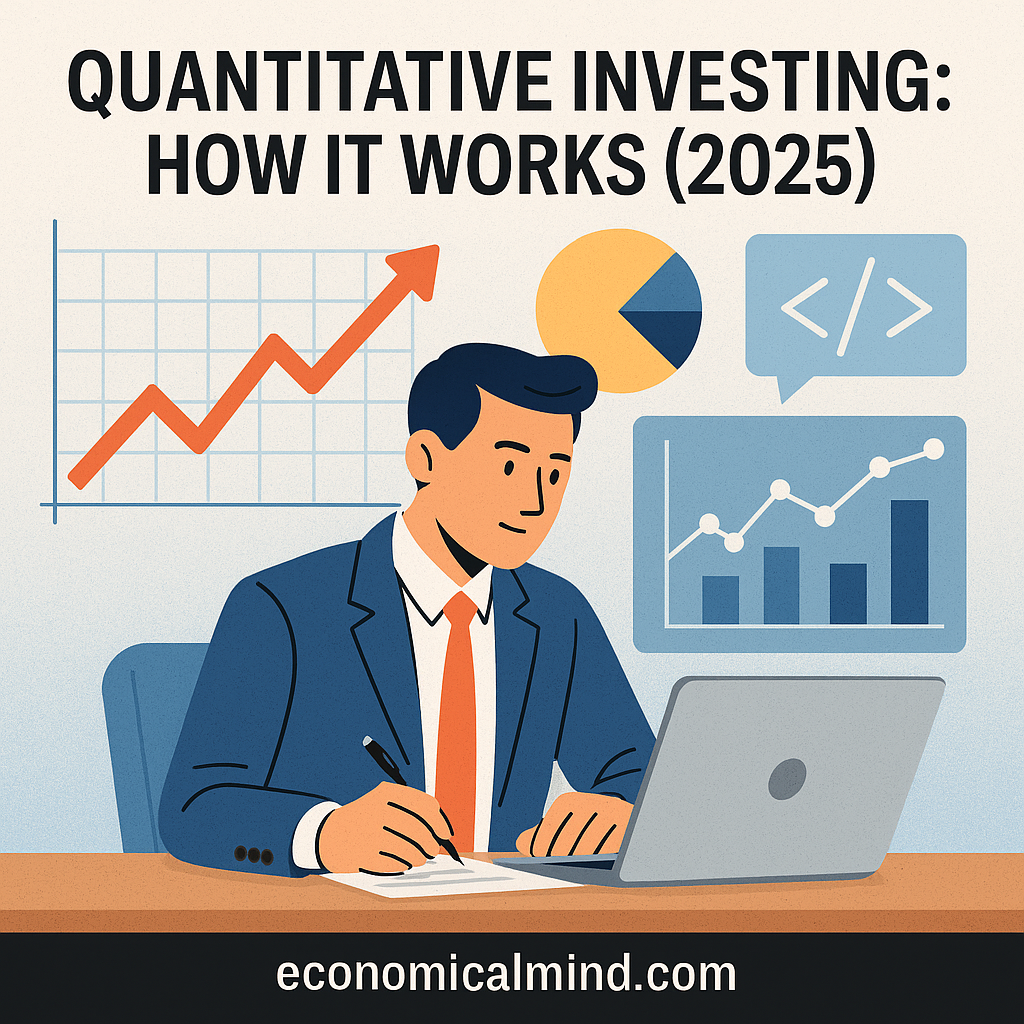
In 2025, investing is increasingly driven by data, algorithms, and technology rather than gut instincts or guesswork. Known as quantitative investing, this strategy uses mathematical models, statistical analysis, and computer algorithms to make trading decisions — removing emotion and bias from the process. Once limited to hedge funds and Wall Street quants, this approach is now accessible to individual investors through new fintech tools and AI-driven platforms.
What Is Quantitative Investing?
Quantitative investing (or “quant investing”) is a strategy that relies on mathematical formulas, historical data, and computer models to identify profitable opportunities in the market.
Instead of choosing investments based on opinions or market sentiment, quant investors use:
- Statistical patterns
- Financial ratios
- Price momentum
- Machine learning models
These systems test and execute trades automatically based on predefined rules.
The Core Idea: Data Over Emotion
Quantitative investing removes the emotional pitfalls of human decision-making — fear, greed, and overconfidence — by letting data guide every move.
For example, a quant strategy might analyze 10 years of stock performance data, find recurring trends before earnings releases, and build a model that buys or sells based on those probabilities.
Over time, these algorithms can adapt and “learn” from new data, improving accuracy — much like how AI powers self-driving cars.
How Quantitative Investing Works
- Data Collection
Quant investors gather massive datasets — stock prices, volume, fundamentals, earnings reports, and even alternative data like sentiment or satellite imagery. - Model Building
Using programming languages such as Python or R, analysts create mathematical models to find inefficiencies in the market. - Backtesting
The model is tested using historical data to evaluate how it would have performed under real conditions. - Execution
Once validated, algorithms execute trades automatically, often within milliseconds. - Continuous Optimization
Models are adjusted regularly as new market data and behaviors emerge.
Common Quantitative Strategies
- Factor Investing: Focuses on measurable characteristics like value, momentum, or size.
- Statistical Arbitrage: Exploits small price discrepancies between related securities.
- Algorithmic Trend Following: Buys when prices rise above moving averages and sells when they fall below.
- Machine Learning Models: Use AI to recognize complex, nonlinear relationships across assets.
In 2025, hybrid strategies combining AI, deep learning, and fundamental data are becoming the new standard.
Tools for Individual Investors
You no longer need a PhD in finance to use quantitative techniques. Platforms like:
- QuantConnect and Alpaca for algorithmic backtesting
- Seeking Alpha Quant Ratings for stock analysis
- Koyfin, Ziggma, and Tiblio for data visualization
make quant-style investing accessible to everyday investors.
Robo-advisors such as Betterment, Wealthfront, and Titan also apply quant principles behind the scenes — optimizing portfolios automatically.
Advantages of Quantitative Investing
- Emotion-free decision-making
- Scalable and consistent performance
- Data-backed strategies with measurable risk control
- Adaptability — models evolve as markets change
Risks and Limitations
While powerful, quant investing isn’t foolproof:
- Overfitting: A model that performs well on historical data may fail in real markets.
- Market Shocks: Algorithms can’t always anticipate black swan events.
- High Data Costs: Accessing quality datasets can be expensive.
- Complexity: Building reliable models requires technical expertise.
The key is balance — understanding how your model works and not treating it as a “black box.”
The Future of Quant Investing (2025 and Beyond)
In 2025, advances in AI, cloud computing, and quantum processing are revolutionizing the field. Individual investors can now use sophisticated machine learning algorithms once reserved for institutional traders.
As automation expands, the human role shifts from making trades to designing smarter systems — combining creativity with computation.
Final Thoughts
Quantitative investing represents the future of intelligent finance — a world where decisions are guided by data, not drama.
By learning the basics and using accessible tools, even individual investors can benefit from algorithmic insights once limited to elite hedge funds. In 2025, mastering quant investing isn’t about coding perfection — it’s about combining discipline, curiosity, and data-driven logic to outperform the emotional crowd.
